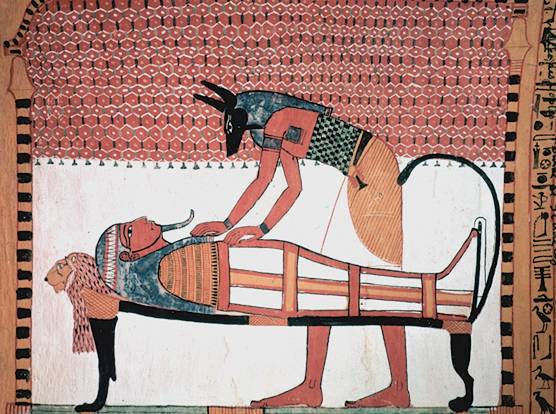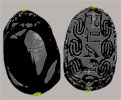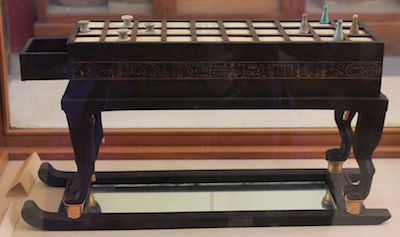The colour black represented death and the afterlife to the ancient Egyptians. Osiris was given the epithet “the black one” because he was the king of the netherworld, and both he and Anubis (the god of embalming) were portrayed with black faces.



The Egyptians also associated black with fertility and resurrection because much of their agriculture was dependent on the rich dark silt deposited on the river banks by the Nile during the inundation. When used to represent resurrection, black and green were interchangeable. As a result, the gods Osiris and Geb were depicted with black or green skin to emphasise their connection with fertility.

Egypt was known as Kemet, “the black land” and it is thought that this was a reference to the Nile not a description of ethnicity. Queen Ahmose-Nefertari was often depicted with black skin. While some have argued that this was a comment on the fact that she was of Nubian descent (which is quite possible) it is equally likely that it was symbolic of the fact that she was the patroness of the necropolis and was one of the few people to be deified.

Black could also be associated with chaos and outsiders. Nubians were depicted with black skin while Asiatics, Libyans and Egyptian women were depicted with yellow skin and Egyptian men with red skin. Yet, black was thought to be able to control chaos. In later periods, healing stones were almost exclusively made from black stone.

Black paint was made from soot or charcoal and occasionally from an ore of manganese. Black onyx was a popular gemstone and Ebony (which takes its modern name from the Egyptian “hbny”) was also highly prized. It was often paired with ivory to make beautiful furniture. Tutankhamun had a beautiful ebony and ivory senet board in his tomb, so that he could enjoy the popular game for eternity.
Copyright J Hill 2010